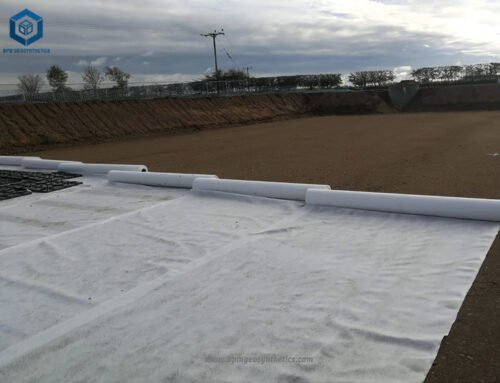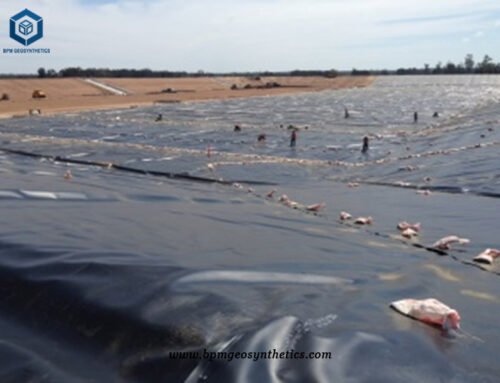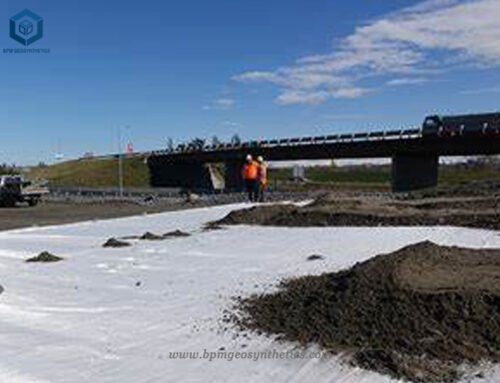The HDPE liner sheet, also known as HDPE geomembrane liner, is the ideal and cost effective geosynthetic material for waste or water containment applications. Its main raw material is composed of high-density polyethylene and medium-density polyethylene. The HDPE geomembrane line is mainly divided into two types: smooth surface and rough surface. The rough surface geomembrane is divided into single rough surface and double rough surface geomembrane. The commonly used geomembrane for landfill is mainly environmentally friendly geomembrane. Because of the different required indicators, the added raw materials are also different, and its mechanical indicators are also very different. Generally speaking, the American standard geomembrane is one level higher than the environmentally friendly geomembrane, and the selection of raw materials is relatively strict. Some, most of the design requirements of landfill projects are based on the indicators of American standard geomembrane. Compared with ordinary geomembrane, the special geomembrane for landfill has higher tensile strength. The length is larger, the acid resistance is stronger, and the geomembrane can be used for a longer time. Due to more rain, the special geomembrane for landfills in my country is more inclined to use the rough surface geomembrane with slippery effect. The HDPE liner sheet with thickness more than 1mm is more suitable for waste containment.
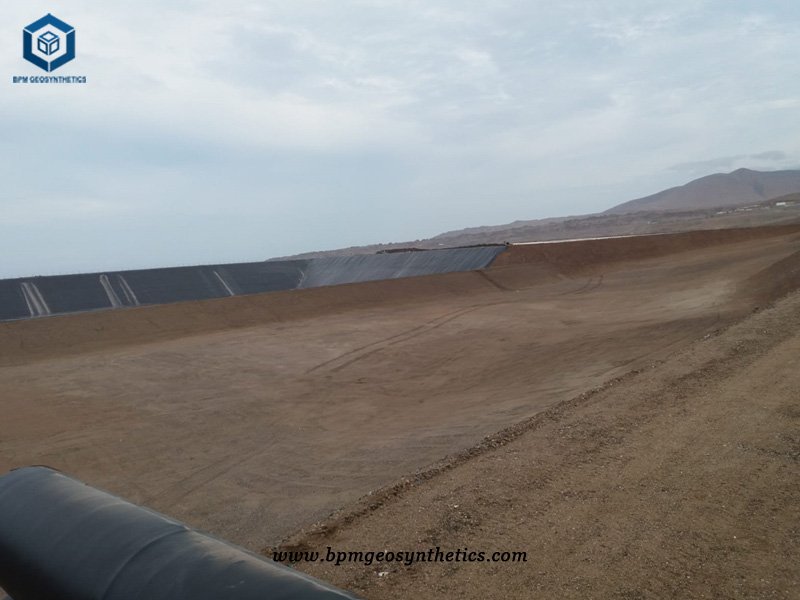
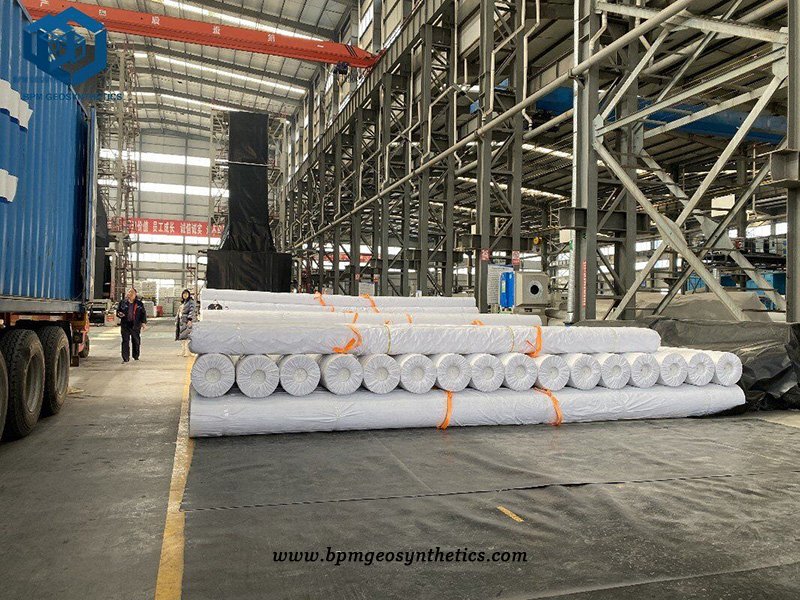
Case Study
- Location -Thailand
- Product – 60 Mil HDPE Liner Sheet
- Application – Tailings Treatment
Issue
A Thai customer currently has a tailings project that requires a new 60 Mil HDPE membrane liner based on GM13 standard. The customer left our company’s BPM brochures and business cards in the exhibition before, knowing that BPM company is a very professional manufacturer of geomembrane, so he sent an inquiry to BPM public mailbox. At present, the customer has some questions about the construction method and laying.
Solution
Our engineer gave the following construction method for the customer’s tailing treatment projects.
1.Do not drag or pull the HPDE geomembrane liner during transportation to avoid being stabbed by sharp objects.
2.It should extend the HDPE liner sheet from the bottom to the high position, do not pull it too tightly, and leave a margin of 1.50% for local sinking and stretching. Considering the actual situation of the project, the slope is laid in the order from top to bottom;
3.The longitudinal joints of two adjacent sheets should not be on a horizontal line, and should be staggered by more than 1m;
- The longitudinal joint should be more than 1.50m away from the dam foot and the bent foot, and should be set on the plane;
- Slope first and then the bottom of the field;
- When laying the slope, the direction of film expansion should be basically parallel to the maximum slope line.
Layout
- Before laying HDPE geomembrane sheet, the corresponding qualified acceptance certificate documents of civil engineering should be obtained.
- Before the geomembrane liner is cut, its relevant dimensions should be accurately measured, and then cut according to the actual size. Generally, it is not suitable to cut according to the size shown in the figure. It should be numbered one by one and recorded in detail on the special form.
- When laying geomembrane, the minimum number of welds should be sought, and raw materials should be saved as much as possible under the premise of ensuring quality. At the same time, it is easy to guarantee the quality.
- The lap width of the seam between the film and the film is generally not less than 10cm, and the welding seam is usually arranged parallel to the maximum slope, that is, along the slope direction.
- Usually in corners and deformed areas, the length of the seam should be shortened as much as possible. Except for special requirements, on slopes with a slope greater than 1:6, within 1.5 meters from the top slope or the stress concentration area, no welds should be provided as much as possible.
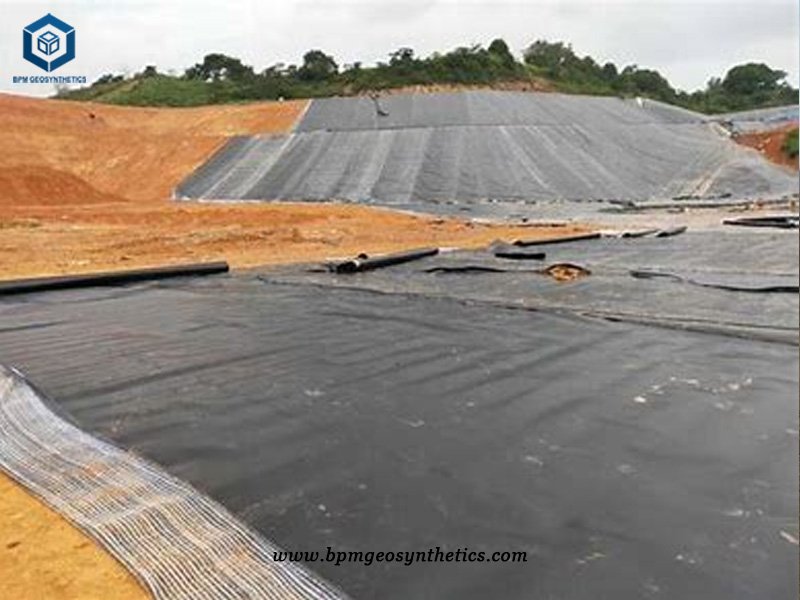
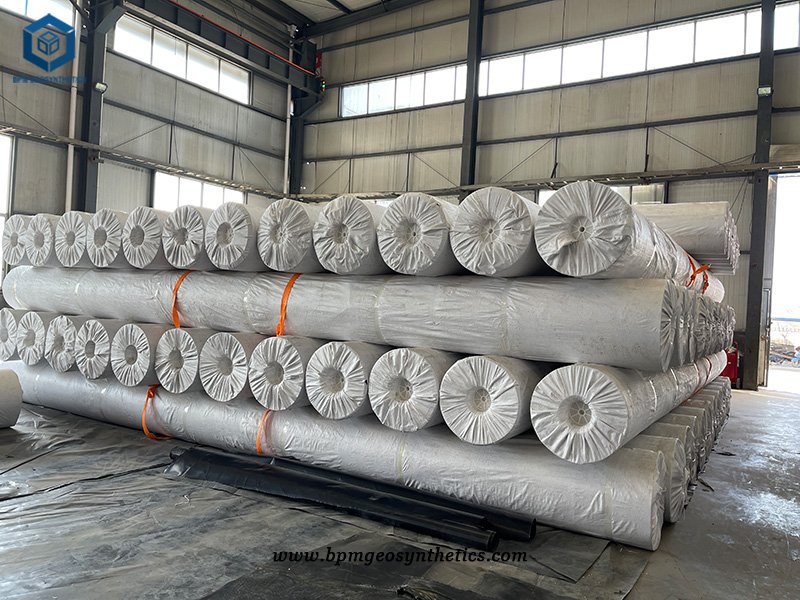
Benefits
HDPE geomembrane liner plays a vital role in tailings treatment due to its unique advantages.
- It is a flexible waterproof material with a high impermeability coefficient (1×10-17cm/s);
- It has good heat resistance and cold resistance, and its use environment temperature is high temperature 110 ℃, low temperature -70 ℃;
- It has good chemical stability and can resist the corrosion of strong acid, alkali and oil. It is a good anti-corrosion material.
- It has high tensile strength, which makes it have high tensile strength to meet the needs of high-standard engineering projects;
- It has strong weather resistance, strong anti-aging performance, and can be exposed for a long time to maintain the original performance;
- It has strong tensile strength and elongation at break, enabling it to be used in various harsh geological and climatic conditions. Adaptable to uneven geological settlement and strong strain
- The use of high-quality virgin plastic and carbon black particles does not contain any preservatives. HDPE has been used in my country to replace PVC as the raw material for food packaging bags and cling film.
About BPM
BPM has been specializing in delivering one stop geosynthetics products and solutions to worldwide customers since its foundation in 2007. BPM had provided many types of effective and state of the art geomembranes, geotextiles, geocells, geosynthetic clay liners (GCLs), drainage boards, geogrids to over 81 countries. Our main customers are from Australia, France, Sweden, UK, Hong Kong, Hungary, New Zealand, Poland, Mexico, Ecuador, Brazil, Pakistan, Bangladesh, Thailand, Vietnam, Malaysia, Indonesia, Singapore, Philippines, Sri Lanka, India, UAE, Saudi Arabia, Qatar, Kenya, Ghana, Ethiopia, Somalia, Nigeria, South Africa, Swaziland, Mongolia, etc.
BPM is not only manufacturing best quality geosynthetic products but also providing professional design and installation service. OEM, ODM, custom development and fabrication are also available. If you have any questions or inquiries, please fill and submit the following form, we will reply as soon as possible.


